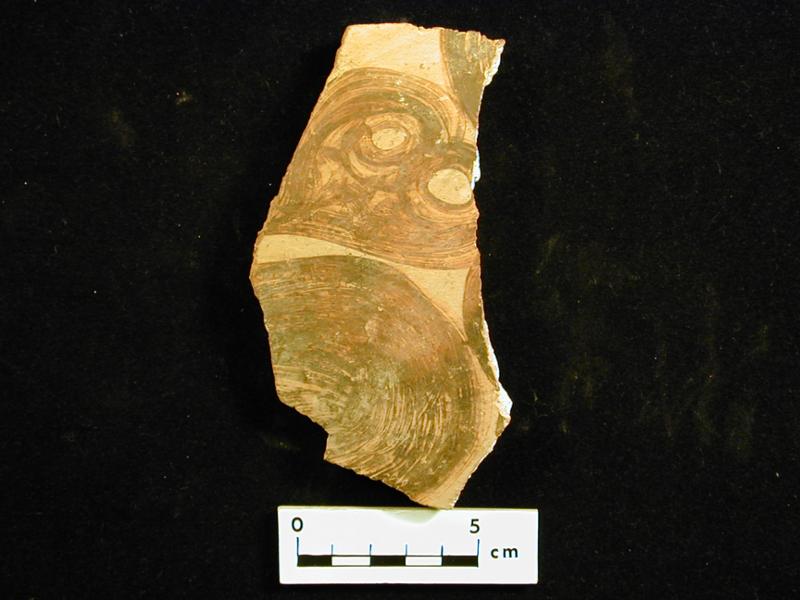Body Sherd
MS4637.88B
From: Greece | Crete | Gournia
Curatorial Section: Mediterranean
| Object Number | MS4637.88B |
| Current Location | Collections Storage |
| Culture | Minoan |
| Provenience | Greece | Crete | Gournia |
| Period | Late Minoan I |
| Section | Mediterranean |
| Materials | Ceramic |
| Description | Five non-joining body-sherds from one or more large closed vessels. Medium textured, light reddish brown (2.5YR 6/4) clay, with light and dark inclusions, covered with pink slip, with decoration in reddish brown to black paint, added red paint, and added white paint. Burnished. Handmade. Interior unpainted. Petaloid loops (FM 63), ivy leaves, and bands. Added red: dots as filling ornaments; bands between dark bands. Added white: lines on petaloid loops; running spirals and other designs (no longer clearly visible) on dark bands. Surface eroded. For petaloid loops see Niemeier 1980: 39-40; for ivy see 25-26. The pieces which were not cleaned all have white plaster on their interior surfaces and on some edges (once contained line or plaster?). The sherds are probably from a piriform jar of a common east Cretan type, like (among many others) Maraghiannis and Karo 1907-21: II, pl. 13 (Mochlos); Platon 1971: pl. on p. 117 (Kato Zakros). The use of spirals and other motifs in added white paint was a common east Cretan trait in LM IB pottery, called "transitional MM III-LM I" by the early excavators (see, for example, Seager 1916: pl. 18, from Pacheia Ammos). |
| Height | 11 cm |
| Length | 12.3 cm |
| Width | 1.2 cm |
| Credit Line | Gift of the Candia Museum (Herakleion Archaeological Museum); H. B. Hawes, 1904 |
Report problems and issues to digitalmedia@pennmuseum.org.


